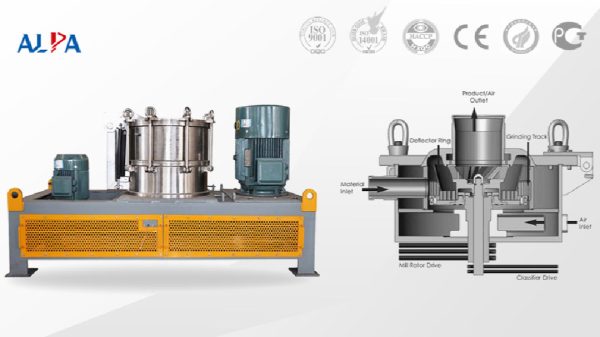
Ultrafine calcium carbonate is an environmentally friendly functional filler with excellent performance. Developing a simple and efficient crushing process and controlling the particle size and shape of the product are the keys to obtaining high-quality ultrafine calcium carbonate and improving its economic benefits.
At present, the ultrafine grinding of calcium carbonate is mainly divided into dry process, wet process and dry-wet combined process. The dry process is generally used to produce products with d97≥3-5μm, and the wet process is generally used to produce products with d97≤3-5μm.
Calcium carbonate dry ultrafine grinding equipment and process
Calcium carbonate dry ultrafine grinding equipment mainly includes Raymond mill, vertical mill, ball mill, jet mill, stirring mill, vibration mill and various mechanical impact mills.
Raymond mill: used in large quantities to produce 38-74μm (200-400 mesh) calcium carbonate products. After modification and configuration of a fine classifier, it is also used to produce d97=30-15μm (500-800 mesh) calcium carbonate fines. pink;
Vertical mill: It can directly produce 325-600 mesh calcium carbonate micro powder (basic demand) products, and can also be used with other ultra-fine grinding equipment to prepare ultra-fine calcium carbonate products.
Ball mill: It is the main equipment of a large-scale calcium carbonate production line. It is equipped with various classifiers to produce calcium carbonate products with d97=5μm, 10μm, 16μm, 45μm and other particle sizes;
Mechanical impact mill: The process is simple, but the output is low. It is mainly used in small and medium-sized calcium carbonate production plants.
